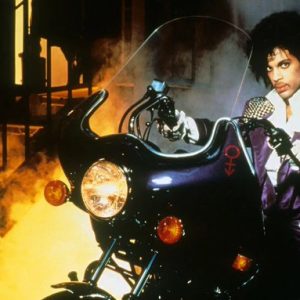Exploring the Visual Artistry in Tina Turner’s Most Memorable Music Videos
When it comes to iconic musicians who transcended genres and generations, Tina Turner undoubtedly stands at the top of the list. Not just for her powerhouse vocals and electrifying stage presence, but also for the groundbreaking visual artistry showcased in her music videos. Turner’s magnetic performances have forever altered the landscape of pop and rock music, but it’s her trailblazing visual style that continues to inspire countless artists and fans alike.
In an era where the music video has become a critical aspect of an artist’s brand, Tina Turner paved the way with her unforgettable clips that resonate with themes of resilience, empowerment, and exuding true diva energy. Let’s take a closer look at a few of her most memorable music videos, diving deep into the eye-catching artistry that helped define her legacy.
“What’s Love Got to Do with It”
Can we talk about iconic? Released in 1984, the music video for "What’s Love Got to Do with It" is a vivid representation of 1980s aesthetics—think bold colors, dramatic lighting, and Turner’s ever-stylish outfits. The video features a striking blend of close-ups that capture Turner’s emotive facial expressions paired with dynamic camera angles that highlight her commanding presence. What’s perhaps more fascinating, though, is how the visual storytelling mirrors the song’s themes of love and independence. As Turner struts through vibrant city streets, the visual artistry encapsulates a complex emotional narrative that many fans resonated with.
“Proud Mary”
No retrospective on Tina Turner is complete without her exhilarating take on “Proud Mary.” The 1971 original may be a rock classic, but it was Turner’s 1971 performance at the Club 54 that truly redefined the meaning of the song through visual spectacle. In the music video, we see Turner transform from a serene riverboat lady to a bold and empowered queen. The set design, complete with swirling mists, vibrant spotlights, and immersive choreography, showcases a high-energy performance that captures Turner’s raw power. The contrasting visuals of calm and chaos exemplify the duality of her talent—effortlessly switching from subdued elegance to high-octane energy. This stark visual storytelling made for a legendary video that continues to inspire artists across genres.
“Simply the Best”
This anthem of empowerment is as much about visuals as it is about the music. The video for “Simply the Best” is all about celebrating love and strength through compelling imagery. Shot in a stunning outdoor setting, the lush landscapes complement Turner’s magnetic energy while she performs the emotional ballad. Costume choice plays a crucial role here; her bold outfits become symbols of triumph and resilience. The use of light and shadow as she sings creates a dramatic atmosphere, immersing viewers in a world where love reigns supreme. It’s more than just a music video—it’s an experience, one that celebrates the indomitable spirit of its creator.
“Better Be Good to Me”
Bringing even more visual richness to her catalog, “Better Be Good to Me” takes viewers on a wild ride filled with high-fashion glam and theatrical elements. The video, which features bold colors and larger-than-life sets, often looks like a fashion editorial brought to life. Turner’s fierce outfits, bold hairstyles, and captivating choreography transform the clip into a work of art in its own right. Visually, the video is both empowering and challenging, with Turner confronting betrayal while still embracing her fierceness. This duality is visually represented through dynamic editing techniques and a cutting-edge aesthetic that was ahead of its time.
“Private Dancer”
The title track of her monumental album “Private Dancer” further cemented Tina Turner’s status as a visual icon. The video features a sultry, moody atmosphere with dramatic lighting that contrasts with the tender emotive side of Turner’s performance. Artistic cinematography captures her from various angles, showcasing her vulnerability and sensuality. The themes related to female empowerment and self-awareness are further accentuated through stunning visuals that draw the viewer into her world. Turner’s expressive movements and emotive expressions self-narrate her journey, encapsulating the spirit of a woman who’s taken control of her destiny.
Legacy of Visual Artistry
Tina Turner’s music videos serve as a testament to her unparalleled legacy in multiple ways. They not only contributed to her success as a performer but also demonstrated the immense potential of music as a visual art form. From powerful storytelling through imagery to bold product placements and high-fashion aesthetics, Turner’s videography continues to inspire generations of artists today. As we navigate an ever-changing music industry, her influence reminds us of the importance of embracing both music and visual artistry to create a truly immersive experience.
In an age where visuals dominate the music scene, the contributions of Tina Turner are not to be forgotten. Her breathtaking shortcomings and triumphs, both onscreen and off, reflect an artistry that continues to inspire music lovers and creators down the line. So, the next time you hit play on any of her iconic music videos, remember that you’re not just revisiting a piece of entertainment; you’re celebrating a visual masterpiece that encapsulates the spirit of an undisputed queen.
